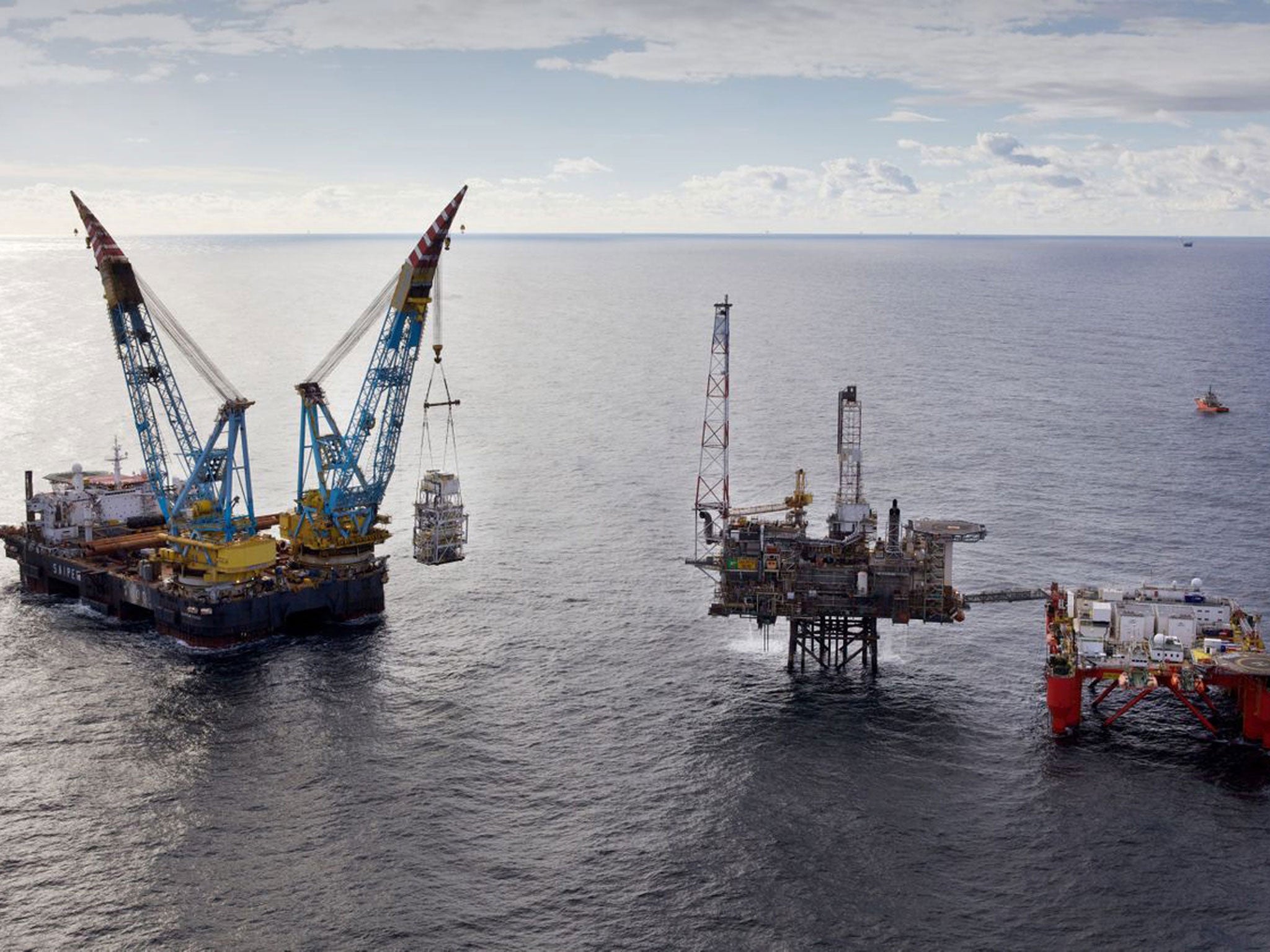Forecasts for North Sea oil tax revenues slashed by 25%
Oil production forecasts for 2017-18 have been revised down on last year by 11% to 29.2 million tonnes

The Treasury’s official economic forecaster has reduced its estimate of how much tax revenue will flow from North Sea oil and gas production by a quarter over the past year.
In its Fiscal sustainability report – an annual snapshot of the public finances over the next five decades – the Office for Budget Responsibility (OBR) said the North Sea would produce £40bn in revenues between 2019-20 and 2040-41, 25 per cent less than the £52bn projected in last year’s forecast.
The downward revision comes at an awkward time for the Scottish National Party, ahead of September’s independence referendum. The SNP has been arguing that strong oil tax revenues would help an independent Scotland fund higher levels of public service spending relative to the UK.
The OBR said the bulk of its downward revision was down to lower expectations for North Sea production volumes. Another factor was changes in the ownership of North Sea oil fields over the past year, which would enable companies to write off more tax revenues against costs.
Oil production forecasts for 2017-18 have been revised down on last year by 11 per cent to 29.2 million tonnes and gas production by 8 per cent to 12.7 billion therms. The OBR expects annual revenues between 2019-20 and 2040-41 to average 0.06 per cent of GDP.
But it added that oil and gas tax revenues have historically been extremely volatile, making it “very hard” to predict with any confidence the long-term pace of decline. Despite the downward revision in North Sea revenues, the OBR also cut its estimate for the size of the UK’s long-term “fiscal gap”, defined as the consolidation needed to bring the debt-to-GDP ratio to 40 per cent (from 75 per cent today) over the next 50 years. The OBR said this would require a cut in spending of 0.9 per cent of GDP in 2019-20, down from 1.2 per cent this time last year.
The watchdog said the Government’s decision to link the state pension to longevity had improved the projected debt- to-GDP ratio to 66 per cent by 2063-64, relative to last year’s forecast. However, it added that this had been mostly offset by its incorporation of new demographic forecasts, showing a larger elderly population later in the century.
The net result is that the projected ratio by 2063-64 only improved by 17 per cent of GDP. It fell from 101 per cent of GDP forecast last year to 84 per cent.
Subscribe to Independent Premium to bookmark this article
Want to bookmark your favourite articles and stories to read or reference later? Start your Independent Premium subscription today.

Join our commenting forum
Join thought-provoking conversations, follow other Independent readers and see their replies